
views
Recognizing Signs of Hip Dysplasia in Older Dogs

Watch your dog as it moves around and see if it ‘bunny hops’. Dogs that have painful hips take shortened steps and tend to hold their rear legs farther forward under their bellies. This can lead to ‘bunny hopping’, which means your dog is holding its back legs together and hopping rather than running in long strides like normal. Watch your dog to see if it: Swivels its hips a lot when it walks Holds its back legs together so that when it walks its back legs hop in a bunny-like fashion Limps or has other abnormal movements Tips over easily Has a change in character, such as unusual grumpiness, which may be a sign of pain
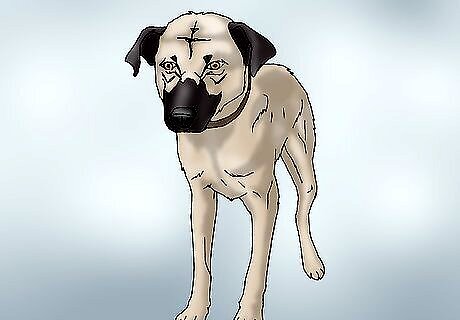
See if your dog has a hard time getting up or lying down. Pain caused by hip dysplasia can get worse the longer your dog remains in a resting position. This is particularly true in the morning after your dog has slept all night. Because of this, you might notice that your dog: Hesitates to lie down if it is standing up Has a harder time getting up if it is lying down Seems stiffer in the morning or when the weather is cold

Monitor your dog’s activity and see if it decreases. A reduced amount of physical activity is 1 of the most common signs of pain caused by hip dysplasia. All dogs slow down as they get older, but a decrease in activity should not occur until your dog is an advanced age. If your dog is not ill or overweight, it should maintain roughly the same activity levels from when it turns 1 to well into its mature years. Look for: A lack of interest in going on runs or doing other physical activities with you Lying down rather than running around in the backyard Getting tired more easily when playing fetch Preferring to sit rather than stand and walk when on the leash

Listen for an audible clicking sound when your dog moves. The term ‘creaking bones’ can be applied to a dog with hip dysplasia. You might notice a clicking sound when your dog moves. This is its bones clicking and loosening up. Listen for this noise when your dog: Gets up after lying down for a while Walks Runs
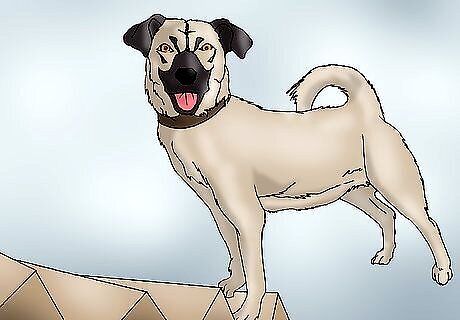
Check to see if your dog is willing to climb up stairs. You might notice that your dog suddenly has a harder time, or is hesitant to climb, stairs that it has never had a hard time navigating in the past. This is because hip dysplasia makes it harder for your dog to climb up stairs or walk up slopes, as your dog’s back legs are stiff and it can’t control them as well as it used to.
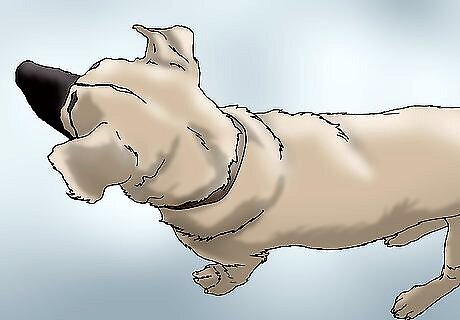
Check your dog for rashes caused by excessive grooming. Inactive dogs who can’t move they want to can get bored. To pass the time, they tend to lick and groom themselves more often than normal. If you notice that your dog is spending more time grooming itself, check it for rashes or hair loss, as both of these things can be caused by excessive grooming. In particular check your dog’s: Hips Flanks Legs
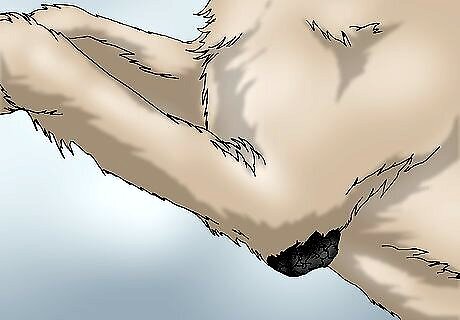
Look for pressure calluses and sores on your dog’s body. Inactive dogs often develop bed sores or calluses in areas on their body that bear the most pressure and have the least padding. This problem gets worse if the dog is constantly lying on hard floors. Check your dog’s: Elbows Points on the hip Shoulders

Feel your dog’s back legs to see if it has lost muscle mass. As your dog stops using its back legs as much, it is likely that it will lose some of the muscle mass in its back legs. This condition is called atrophy. Feel along your dog’s back legs for things like: : Being able to feel its bones more easily Less muscle definition and tone Sunken-in hips EXPERT TIP Ray Spragley, DVM Ray Spragley, DVM Veterinarian Dr. Ray Spragley is a Doctor of Veterinary Medicine and the Owner/Founder of Zen Dog Veterinary Care PLLC in New York. With experience in multiple institutions and private practices, Dr. Spragley’s specializations and interests include non-surgical management of cranial cruciate ligament tears, Intervertebral Disk Disease(IVDD), and pain management in osteoarthritis. Dr. Spragley holds a BS in Biology from SUNY Albany and has a Doctor of Veterinary Medicine degree (DVM) from Ross University School of Veterinary Medicine. He is also a Certified Canine Rehabilitation Therapist (CCRT) through the Canine Rehab Institute as well as a Certified Veterinary Acupuncturist (CVA) through Chi University. Ray Spragley, DVM Ray Spragley, DVM Veterinarian Treat hip pain in older dogs. Ease worsening hip pain in aging dogs through joint supplements with compounds like glucosamine and chondroitin. Alternative treatments like acupuncture or laser therapy may also help. For severe arthritis, prescriptions like nerve or muscle relaxant medications, steroids, or even surgery could be warranted.
Recognizing Signs of Hip Dysplasia in Young Dogs and Puppies
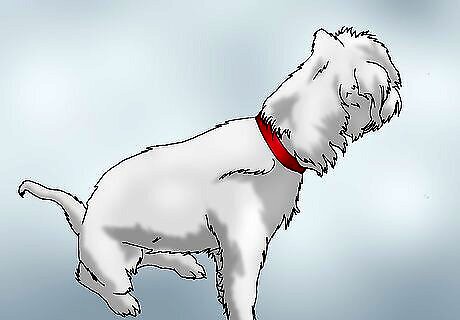
Watch your pup to see if it has a hard time moving around. If your puppy has hip dysplasia, you may begin to see signs of the condition as early as 5 to 10 months of age. In particular, you may notice that your puppy has a harder time moving around than other puppies. It may: Take shorter steps or have less of a stride Hold its back legs together and use its front legs more so that it can hop with its back legs, much like a bunny
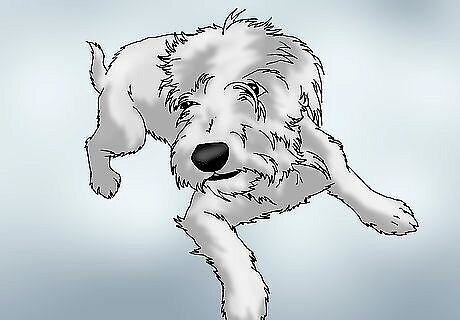
Look to see if your puppy has a hard time getting up after playing. While playing might be fine for your puppy, you should still keep an eye on it to see how it handles resting after play. A pup that has hip dysplasia will be more inclined to lie down for longer, and may act like it doesn’t want to get up after it has rested. This is because its hips become stiff when resting after activity.
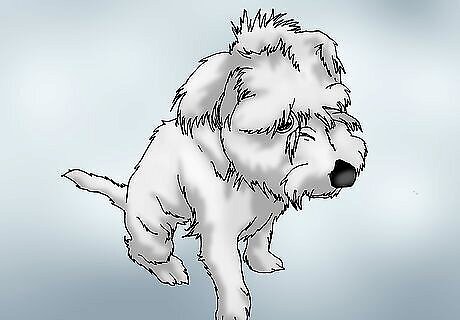
See if your pup or young dog is hesitant to jump up on things. If your pup has hip dysplasia, it will most likely avoid jumping up on couches, your lap, etc. This is because its back legs are not as strong as its front legs, and it could hurt to exert enough force on its back legs to jump up onto things. Pat the couch next to you. If your puppy looks like it wants to jump up but doesn’t, or tries to and then whines in pain, it may have hip dysplasia.
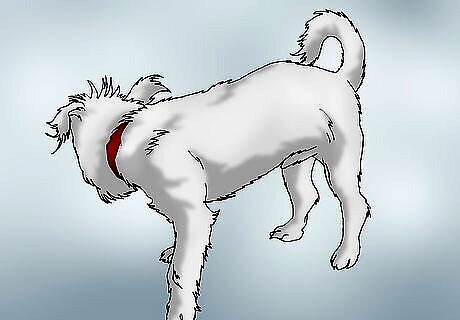
Watch your young dog to see if it has a wobbling, unsteady gait. As mentioned above, puppies and young dogs who have hip dysplasia have a harder time moving around than other dogs. This might lead to your dog developing an unsteady walk that could be described as: Wobbling Weaving Tipping over a lot
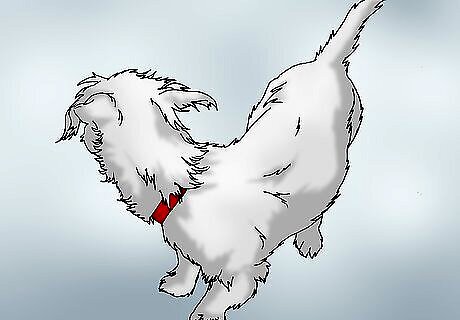
Look at how your puppy stands and see if it puts more weight on its front legs. Puppies and young dogs with hip dysplasia tend to stand with their rear legs slightly forward, so that their front legs can support more of their weight. This can lead to their forearms being much more developed than their hind legs. When your puppy is standing: Check to see if its hind legs are pressed slightly forward. Feel its forearms, which may be muscular, compared to its hind legs, which might feel bony.
Preventing Hip Dysplasia from Progressing
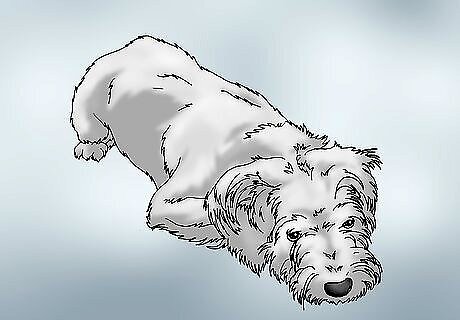
Take your dog to the vet for a checkup if you notice signs of hip dysplasia. If you notice signs of hip dysplasia, talk to your vet right away and have your dog examined. There are ways to prevent the hip dysplasia from getting worse, as well as supplements and medications that your dog to take to keep it from feeling pain caused by the dysplasia. Talk to your vet about giving your dog supplements before giving it medication. Some natural supplements can help your dog regain bone strength. These supplements include omega-3, antioxidants, and joint supplements. Your vet may prescribe a medication for your dog. Make sure to know when and how often your dog should get this treatment.

Feed your dog healthy food that will help his bones stay strong, but do not overfeed your dog. Studies have proven that obese dogs are more likely to develop hip dysplasia. Ask your vet for a recommended feeding guide that you can follow. Most dog foods have a recommended feeding amount, and following it is sufficient. Your dog can become obese when: The recommended daily feed allowance is exceeded. When your dog consumes high energy snacks but doesn’t get enough exercise.
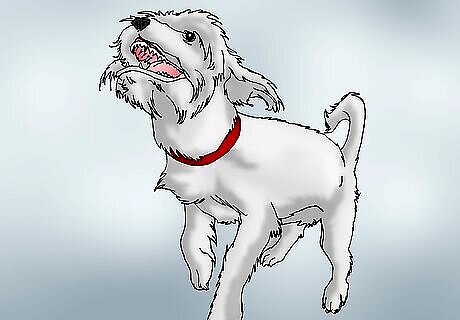
Make sure your dog does gentle exercises for short periods each day. Gentle exercises means that the exercise does not make the hip dysplasia worse. In particular, swimming is a gentle exercise that can keep your dog fit and pain-free. Break your dog’s exercise up into short exercises each day. For example, going on two short 10-minutes walks, and then letting your dog swimming for 10 or 20 minutes, is better than taking your dog for a long 30 minute walk.

Talk to your veterinarian about surgery as a last resort. There are several different surgical procedures available to correct your dog’s hip dysplasia. However, the surgery recommended for your dog will depend on its age, weight, and size. Some examples of different surgeries are: Triple Pelvic Osteotomy, which is used on young puppies. Total Hip Replacement is recommended for dogs with degenerative arthritis or chronic hip dysplasia.











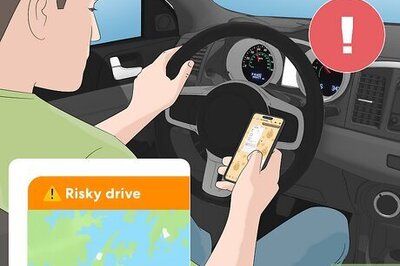




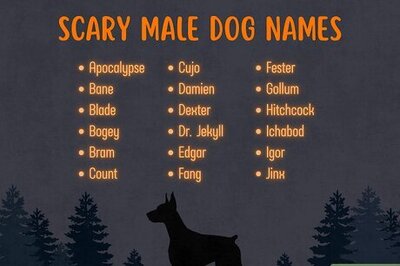



Comments
0 comment